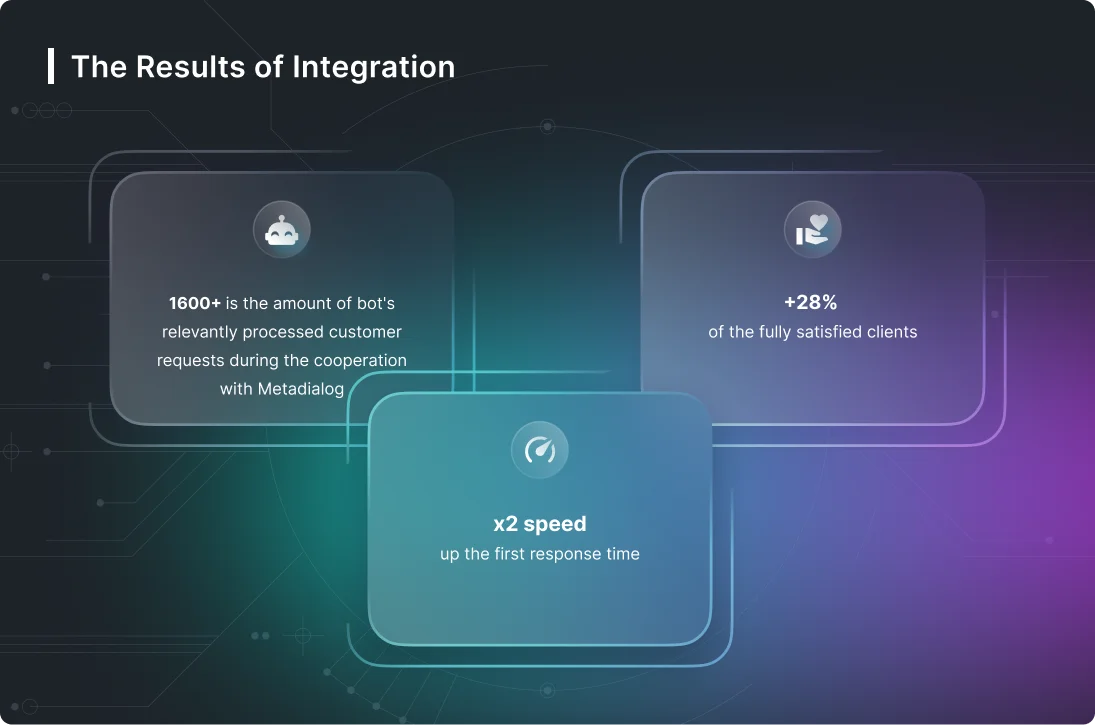What Is Machine Learning? Definition, Types, and Examples
At its core, the method simply uses algorithms – essentially lists of rules – adjusted and refined using past data sets to make predictions and categorizations when confronted with new data. Machine Learning, as the name says, is all about machines learning automatically without being explicitly programmed or learning without any direct human intervention. This machine learning process starts with feeding them good quality data and then training the machines by building various machine learning models using the data and different algorithms. The choice of algorithms depends on what type of data we have and what kind of task we are trying to automate. The technique relies on using a small amount of labeled data and a large amount of unlabeled data to train systems. First, the labeled data is used to train the machine-learning algorithm partially.
- The financial services industry is championing machine learning for its unique ability to speed up processes with a high rate of accuracy and success.
- This approach to algorithm design enables the creation and design of artificially intelligent programs and machines.
- It is a branch of artificial intelligence based on the idea that systems can learn from data, identify patterns and make decisions with minimal human intervention.
- They will use languages like Python and Java to process data, build models, and transmit the results to other applications.
- Additionally, machine learning is used by lending and credit card companies to manage and predict risk.
Machine learning is the science of developing algorithms and statistical models that computer systems use to perform tasks without explicit instructions, relying on patterns and inference instead. Computer systems use machine learning algorithms to process large quantities of historical data and identify data patterns. This allows them to predict outcomes more accurately from a given input data set. For example, data scientists could train a medical application to diagnose cancer from x-ray images by storing millions of scanned images and the corresponding diagnoses.
Find our Post Graduate Program in AI and Machine Learning Online Bootcamp in top cities:
At a high level, machine learning is the ability to adapt to new data independently and through iterations. Applications learn from previous computations and transactions and use “pattern recognition” to produce reliable and informed results. Today’s advanced machine learning technology is a breed apart from former versions — and its uses are multiplying quickly. That same year, Google develops Google Brain, which earns a reputation for the categorization capabilities of its deep neural networks. Instead of typing in queries, customers can now upload an image to show the computer exactly what they’re looking for.
Unsupervised learning
models make predictions by being given data that does not contain any correct
answers. An unsupervised learning model’s goal is to identify meaningful
patterns among the data. In other words, the model has no hints on how to
categorize each piece of data, but instead it must infer its own rules. Algorithms trained on data sets that exclude certain populations or contain errors can lead to inaccurate models of the world that, at best, fail and, at worst, are discriminatory. When an enterprise bases core business processes on biased models, it can suffer regulatory and reputational harm. This part of the process is known as operationalizing the model and is typically handled collaboratively by data science and machine learning engineers.
Great Companies Need Great People. That’s Where We Come In.
Voice assistants help us find the information and products we need, and self-driving cars can (in theory) take over when we are distracted. Well, here are the hypothetical machine learning description students who learn from their own mistakes over time (that’s like life!). So the Reinforcement Machine Learning Algorithms learn optimal actions through trial and error.
What is Machine Translation? Definition from TechTarget – TechTarget
What is Machine Translation? Definition from TechTarget.
Posted: Wed, 02 Aug 2023 13:17:44 GMT [source]
You might find this emerging approach to machine learning powering digital assistants like Siri and voice-driven TV remotes, in fraud detection technology for credit card companies, and as the bedrock of operating systems for self-driving cars. There are a number of machine learning algorithms that are commonly used by modern technology companies. Each of these machine learning algorithms can have numerous applications in a variety of educational and business settings.
As you’re exploring machine learning, you’ll likely come across the term “deep learning.” Although the two terms are interrelated, they’re also distinct from one another. Build an AI strategy for your business on one collaborative AI and data platform called IBM watsonx™—where you can train, validate, tune and deploy AI models to help you scale and accelerate the impact of AI with trusted data across your business. Since there isn’t significant legislation to regulate AI practices, there is no real enforcement mechanism to ensure that ethical AI is practiced.

Association rule learning is a method of machine learning focused on identifying relationships between variables in a database. One example of applied association rule learning is the case where marketers use large sets of super market transaction data to determine correlations between different product purchases. For instance, “customers buying pickles and lettuce are also likely to buy sliced cheese.” Correlations or “association rules” like this can be discovered using association rule learning. In this example, we might provide the system with several labelled images containing objects we wish to identify, then process many more unlabelled images in the training process.
Languages
The current incentives for companies to be ethical are the negative repercussions of an unethical AI system on the bottom line. To fill the gap, ethical frameworks have emerged as part of a collaboration between ethicists and researchers to govern the construction and distribution of AI models within society. Some research (link resides outside ibm.com) shows that the combination of distributed responsibility and a lack of foresight into potential consequences aren’t conducive to preventing harm to society. Bias and discrimination aren’t limited to the human resources function either; they can be found in a number of applications from facial recognition software to social media algorithms.
- Artificial neural networks (ANNs), or connectionist systems, are computing systems vaguely inspired by the biological neural networks that constitute animal brains.
- Reinforcement learning refers to an area of machine learning where the feedback provided to the system comes in the form of rewards and punishments, rather than being told explicitly, “right” or “wrong”.
- Machine learning technology also helps companies improve logistical solutions, including assets, supply chain, and inventory management.
- Many of today’s leading companies, including Facebook, Google and Uber, make machine learning a central part of their operations.
For humans, this is a simple task, but if we had to make an exhaustive list of all the different characteristics of cats and trucks so that a computer could recognize them, it would be very hard. Similarly, if we had to trace all the mental steps we take to complete this task, it would also be difficult (this is an automatic process for adults, so we would likely miss some step or piece of information). Read about how an AI pioneer thinks companies can use machine learning to transform. In DeepLearning.AI and Stanford’s Machine Learning Specialization, you’ll master fundamental AI concepts and develop practical machine learning skills in the beginner-friendly, three-course program by AI visionary Andrew Ng. Privacy tends to be discussed in the context of data privacy, data protection, and data security.
Once you upskill, you might be the perfect match for many machine learning job descriptions. Machine learning operations (MLOps) is the discipline of Artificial Intelligence model delivery. It helps organizations scale production capacity to produce faster results, thereby generating vital business value. In this case, the unknown data consists of apples and pears which look similar to each other. The trained model tries to put them all together so that you get the same things in similar groups. The continued digitization of most sectors of society and industry means that an ever-growing volume of data will continue to be generated.
The model is then re-trained on the resulting data mix without being explicitly programmed. The way in which deep learning and machine learning differ is in how each algorithm learns. “Deep” machine learning can use labeled datasets, also known as supervised learning, to inform its algorithm, but it doesn’t necessarily require a labeled dataset. Deep learning can ingest unstructured data in its raw form (e.g., text or images), and it can automatically determine the set of features which distinguish different categories of data from one another.
For example, an unsupervised model might cluster a weather dataset based on
temperature, revealing segmentations that define the seasons. You might then
attempt to name those clusters based on your understanding of the dataset. Two of the most common use cases for supervised learning are regression and
classification.
Machine learning is all about data, so a machine learning engineer must know how to work with databases and big data technologies like Hadoop or Spark. These technologies enable engineers to efficiently collect, store, and process the large amounts of data machine learning models require. Machine Learning is complex, which is why it has been divided into two primary areas, supervised learning and unsupervised learning. Each one has a specific purpose and action, yielding results and utilizing various forms of data. Approximately 70 percent of machine learning is supervised learning, while unsupervised learning accounts for anywhere from 10 to 20 percent.
A Comprehensive List of Resources to Master Large Language Models – KDnuggets
A Comprehensive List of Resources to Master Large Language Models.
Posted: Wed, 22 Nov 2023 08:00:00 GMT [source]
This is a combination of Supervised and Unsupervised Machine Learning that uses a little amount of labeled data like Supervised Machine Learning and a larger amount of unlabeled data like Unsupervised Machine Learning to train the algorithms. First, the labeled data is used to partially train the Machine Learning Algorithm, and then this partially trained model is used to pseudo-label the rest of the unlabeled data. Finally, the Machine Learning Algorithm is fully trained using a combination of labeled and pseudo-labeled data. This approach involves providing a computer with training data, which it analyzes to develop a rule for filtering out unnecessary information.
PCA involves changing higher-dimensional data (e.g., 3D) to a smaller space (e.g., 2D). Machine learning has made disease detection and prediction much more accurate and swift. Machine learning is employed by radiology and pathology departments all over the world to analyze CT and X-RAY scans and find disease.
It is based on learning by example, just like humans do, using Artificial Neural Networks. These Artificial Neural Networks are created to mimic the neurons in the human brain so that Deep Learning algorithms can learn much more efficiently. Deep Learning is so popular now because of its wide range of applications in modern technology.
The brief timeline below tracks the development of machine learning from its beginnings in the 1950s to its maturation during the twenty-first century. Typically, programmers introduce a small number of labeled data with a large percentage of unlabeled information, and the computer will have to use the groups of structured data to cluster the rest of the information. Labeling supervised data is seen as a massive undertaking because of high costs and hundreds of hours spent.

